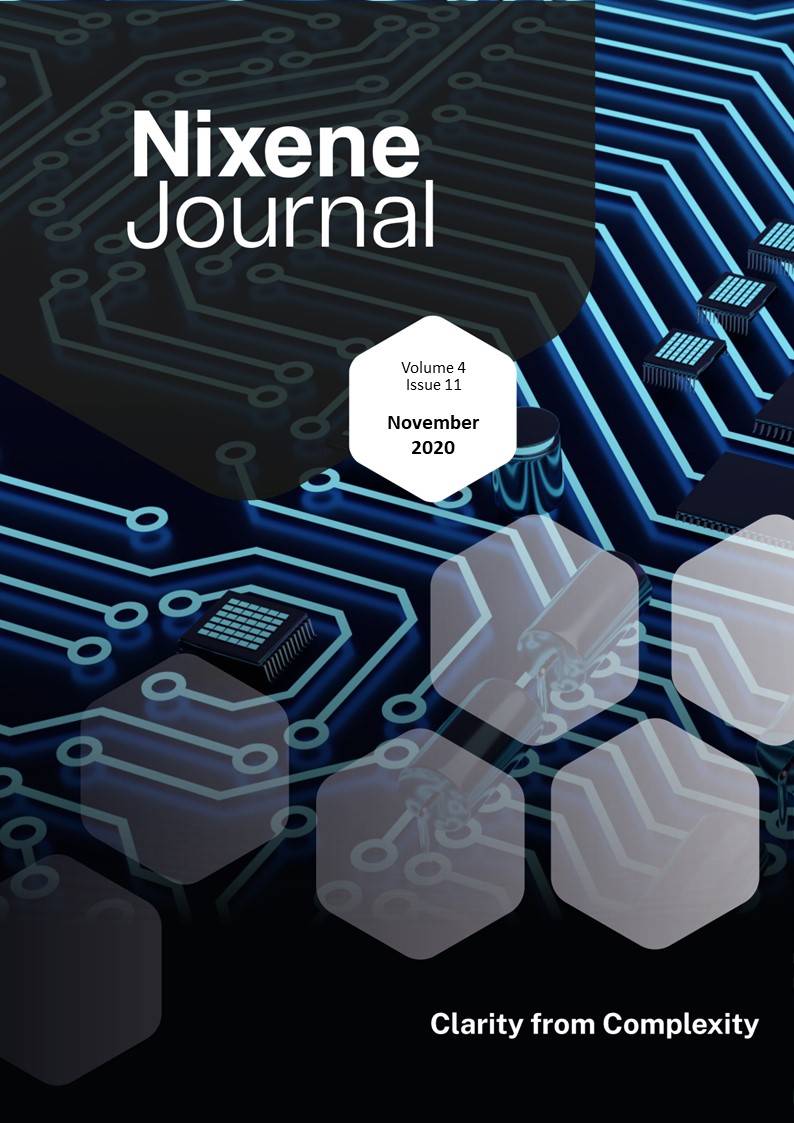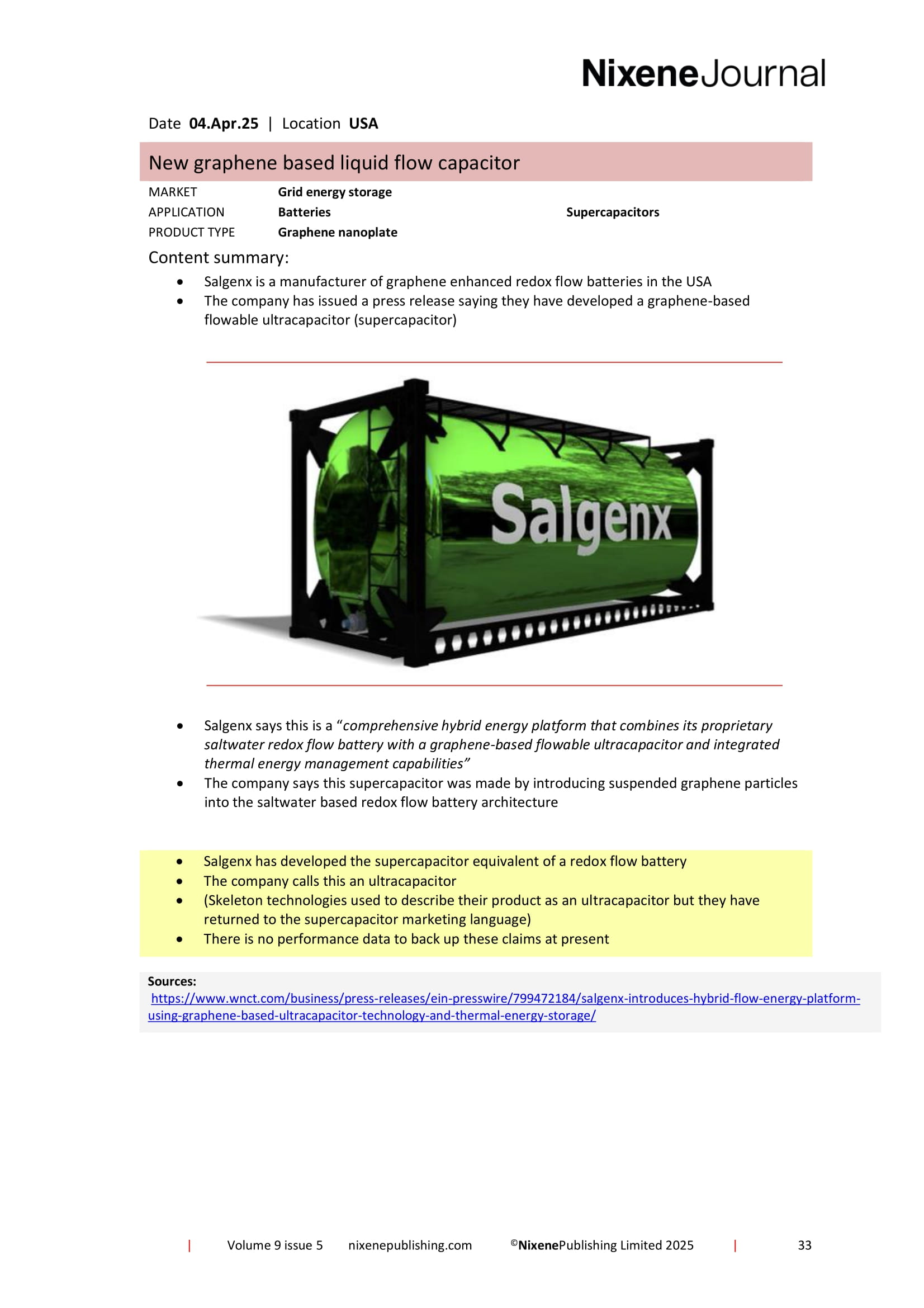Journals
This product is relevant to the following:
Material:
Other:
, ,Locations:
Markets:
Applications:
Product Types:
Technologies:
Related products
-

Vol 6 Issue 3
This month Rob and I gained first-hand experience of the benefits of adding graphene to enhance concrete. We were given a tour of the new Mayfield development in Manchester, UK. The site is still under construction, and parts of it are now open to the public. One of these areas is the new mezzanine floor area directly underneath the old Mayfield rail station. We were standing on what seemed to be an unremarkable concrete floor. It becomes remarkable when you know what to look for. We were lucky to have one of the joint MDs Alex McDermott as our guide. The whole floor was constructed and finished in a fraction of the time it would normally take. Also, the floor is flawless, with no expansion joints or cracking. There is also no sign of shrinkage. We knew graphene-enhanced concrete was strong. Now we know there are other benefits emerging. Graphene is the gift that keeps giving. Graphene-enhanced concrete is being trialled in other parts of the world too. In New Zealand, First Graphene has partnered with a particularly active distributor and trial pours are already underway. In the USA, Debbie discovered that the US Army ERDC also has an active interest in graphene enhanced concrete. They are discovering the same strength and fast cure benefits that graphene confers to the finished construction. You can find out more in her special feature. Battery technology continues to be developed. First Graphene and Zentek have both turned their attention to silicon anodes. Silicon is an attractive material to make Li-ion battery electrodes. The problem is it expands by up to 300% when lithium migrates into the crystal structure during charging. Using silicon particles coated with graphene nanoplates seems to mitigate this problem. Transition metal dichalcogenides (TMDs) are another two-dimensional (2D) material. Akanksha Urade wrote a good overview of the technology this month, and separately the Graphene Flagship published an overview of their interest in these materials. They have been working on using TMDs as next generation heat pumps. They can be used in heating and cooling applications and also as thermoelectric generators. This work is still at the early stage, however there are well funded teams working in this research area so we can expect to see meaningful progress in the future. Chemical vapour deposition (CVD) graphene used to be talked about in terms of just a research project. Now we know industrial processes can make graphene films by the kilometre and at high speeds. The development of the technology has matured from academia to industrial R&D. One of the companies in Korea, Charmgraphene has now developed graphene separation and transfer technology to the point where they can make freestanding graphene films at square centimetre scale and in thicknesses ranging from three to ten atomic layers thick. You can read about more of the astonishing progress being made in this field by reading this packed issue. Adrian Nixon, 1st March 2022£45.00 View product -

Vol 6 Issue 10
Dear reader, you will know that we are tracking the progress of the biggest graphene companies in the world. Levidian is the biggest on paper with their announced £700 million ($780 m USD) contract with the UAE (vol 6 iss 6 p.26). The other company is Skeleton Technologies who make graphene enhanced supercapacitors for transport systems. They have been making steady progress over the past few years and have now announced a new €220 million ($215 m USD) super factory that will open in Germany in 2024. This will give the company an order of magnitude increase in production capacity (p.32 of this issue). Skeleton have also announced they have been awarded the contract to supply supercapacitors for the latest metro units in the Spanish city of Grenada (p.22). Further industrial progress is being made in the USA. Cardea Bio is a manufacturer of graphene field effect transistor biosensors. Essentially these are lab-on-a-chip devices that will give an instant read out of medical conditions from a sample of body fluids. The company has mastered the art of mass production and its factories can produce up to 20,000 graphene sensors per month. They also report that next year they will have produced their millionth biosensor. This company is shaping up to be a formidable presence in the graphene biosensor market. On the research and technical side, there has been much progress in the quality control of graphene. Terrance Barkan convened a webinar of metrology experts from world class institutions in the UK, USA and South America. The Raman spectroscopy masterclass is well worth viewing if you need to understand how the quality of graphene is measured by this technique and its limitations (p.15). By coincidence this month researchers in India have developed a new technique for reliably measuring the number of layers of graphene in a sample. Rather than use an expensive raman spectrometer, they have found a much cheaper optical microscope can provide similar information (p.17). In the UK, researchers have published a literature review of sustainable fibres for polymer composites. The work clearly shows why sustainable natural fibres are not being adopted to replace synthetic fibres. Natural fibres are an order of magnitude weaker than their synthetic counterparts. There is room for optimism though. The study shows that graphene can enhance the strength of natural fibres in polymer composites and shows there is one primary candidate natural fibre that, with graphene, just might challenge the supremacy of synthetic fibres (p.18). You can find out about this and much more in this fascinating issue. Dear reader, I invite you to read on… Adrian Nixon 1st October 2022£45.00 View product -

Vol 6 Issue 2
A graphene toaster was demonstrated for the first time at the consumer electronics show in Las Vegas by Korean company Graphene Square. This may not sound like a world changing invention, but it is something worth paying attention to because this is a rare application for chemical vapour deposition (CVD) graphene in a consumer electronics device. Until now, CVD graphene has been used in very small pieces in sensors. This toaster has a piece of CVD graphene on the top and bottom glass panels making a transparent infrared grill. The graphene is made at a scale of 200mm x 150mm and this tells us a that the company has a viable CVD roll to roll process. The process can make graphene at this scale and also provides the capability to separate the graphene from the forming substrate to other surfaces, in this case glass. The next step is to do this commercially. Graphene Square admits this is still at least a year away. This is still impressive progress and tells us that the industrial manufacture of CVD graphene is developing quickly. CVD graphene is also in the news this month. British company Paragraf announced through Queen Mary University, London, that they can create graphene at wafer scale, and this could be a replacement for indium tin oxide (ITO). This was picked up by technology blogs around the world, and graphene manufacturer Versarien felt obliged to disclose it is working on a similar project with a graphene manufacturer in Korea. These announcements about CVD graphene touchscreens sound impressive. However, as far as we can tell from the current state of the art, the economic and technical cases are not sufficiently proven to convince us we will see this technology in the immediate future. The term ‘bottom-up graphene’ used to refer to CVD graphene assembled atom by atom. Graphene powder manufacturing has been evolving rapidly over the last few years and can now be made by atomic assembly methods too. We have summarised the various methods in our special feature. We also look at the implications for competitive activity, as these new manufacturing methods meet the new market dynamics driving the sustainability agenda. While we cannot state which individual companies will achieve success, we can make some predictions about the characteristics successful graphene powder manufacturers will need to have. We hope you agree this makes for fascinating reading along with the rest of the compelling content this issue. Adrian Nixon, 1st February 2022£45.00 View product -

Vol 4 Issue 11
When I was studying Chemistry, I remember being fascinated by a massive wood and glass cabinet at the college entrance. It was a periodic table containing actual samples of the elements. The lasting impression was how many of the elements were metals. Non-metals are in the minority. There is method in my recollection. A few weeks ago, a new form of carbon was announced by a team in the USA. They call it U-carbon and it is metallic. It conducts electricity, is magnetic and the sample they have made looks just like a highly polished metal mirror. Carbon is not a metal. Or is it? U-carbon is a layered combination of 2D and 3D material. This one will keep scientists arguing about definitions for some time to come. In the meantime, the applications for something that is mirror-like, has a very high melting point, is electrically and thermally conductive as well as magnetic and extremely hard, will be myriad. U-carbon is something to watch. Another research project hit the headlines this month. The University of Arkansas announced they had made a device using graphene that extracts limitless electrical energy from Brownian motion. I spent several days with two of the smartest people I know to figure out what was actually going on here because this work appears to invalidate earlier work by Richard Feynman. We think we’ve got to the bottom of this and while their device works at the small scale, we think they will encounter problems scaling up and discover that Richard was right all along. Time will tell. Yet more fascinating work has been done by the Pacific Northwest National Laboratory. They have made a new material; a graphene-copper metal composite. This is a new shear forming technique for making metal components and wires from powders. This shows 5% improved electrical conductivity compared with copper. General Motors is already working with this to lightweight their electric vehicles. We can see huge opportunities in space and clean energy where lightweighting electrically conductive copper will be a significant leap forward. Chinese electronics hardware company MSI has embraced graphene composites. Their latest graphics card has a casing made from a graphene enhanced polymer that is four times stronger and conducts heat sixteen times better than the normal plastic they used for the casing. Another eye-catching development was made by researchers at the University of Surrey. They have found that adding small amounts of graphene to an acrylate-based polymer makes it look like a green opalescent material. More importantly its colour changes red when squeezed and blue when stretched. This is reversible. It also responds to temperature too, losing its colour irreversibly above a set temperature. This means they have created a sensor that does not need batteries. As usual there is so much more in this issue, the pace of this field is astonishing. Adrian Nixon, 1st November 2020£45.00 View product



